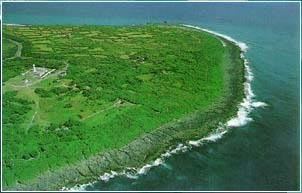Province Taiwan Province | Phone +886 8 885 1101 | |
 | ||
Address 946, Taiwan, Pingtung County, Hengchun Township, 鵝鑾里鵝鑾路301號 Hours Open today · 6:30AM–6:30PMThursday6:30AM–6:30PMFriday6:30AM–6:30PMSaturday6:30AM–6:30PMSunday6:30AM–6:30PMMonday6:30AM–6:30PMTuesday6:30AM–6:30PMWednesday6:30AM–6:30PM Similar Eluanbi Lighthouse, Kenting National Park, South Bay, National Museum of Marine Bi, Bashi Channel | ||
76 kenting national park tour cape eluanbi taiwan jon de leon
The Cape Eluanbi (Chinese: 鵝鑾鼻; pinyin: Éluánbí; Wade–Giles: O2-luan2-pi2; Pe̍h-ōe-jī: Gô-lôan-phīⁿ) is a cape in Hengchun Township, Pingtung County, Taiwan.
Contents
- 76 kenting national park tour cape eluanbi taiwan jon de leon
- Cape eluanbi
- NameEdit
- LocationEdit
- HistoryEdit
- LighthouseEdit
- Nature and toursimEdit
- References
Cape eluanbi
NameEdit
The Hokkien name Gô-lôan (Chinese: 鵝鑾; pinyin: Éluán) derives from Goran, the term for the noun "sail" in the Paiwan language of Paiwan people, one of the groups of Taiwanese aborigines. The word phīⁿ (Chinese: 鼻; pinyin: bi) means "nose", referring to the shape of a large stone in the nearby Banana Bay (香蕉灣). During Japanese rule, the name was usually written in katakana or Kanji (Japanese: ガランピ/鵞鑾鼻; rōmaji: Garambi).
LocationEdit
It is the southernmost end of Central Mountain Range and part of Kenting National Park. It is also known as Ngoluanpi, Goa-loan-pi, and South Cape. Facing the Luzon Strait and the Bashi Channel, it is the southernmost point of mainland Taiwan.
HistoryEdit
The cape was recognized as the southernmost point of the range of the empire during Japanese colonial periods, and was an important collider of war shipping. One of the major whaling station on Taiwan by Japanese industry was also situated in this time, targeting humpback whales in Nan Wan and Banana Bay and jawbones of baleen whales were held as the arch at the Garanpi Shrine (Shintoism) which was destroyed along with the Lighthouse during the Second World War.
LighthouseEdit
There is a lighthouse situated on Cape Eluanbi, called Eluanbi Lighthouse. It was one of armed lighthouse firstly built by Qing dynasty, and was destroyed by the dynasty itself at the point of retreating, and was re-built by Japanese government in 1898. The lighthouse was again destroyed during the World War, and was restored after the war. It was chosen as one of Eight Views of Taiwan in colonial times.
Nature and toursimEdit
The cape is located in the Eluanbi Park. Nature reserves such as the Longkeng Ecological Protection Area (龍坑生態保護區) protecting coral reefs and virgin forst of Banana Bay and Hengchun Peninsula. 26 species of land crabs inhabit in the area and which is the highest diversity of terrestrial crabs in single areas in the world. Although whales no longer or if in very small numbers migrate into the area, other organisms such as smaller cetaceans and dolphins, sea turtles, and bull sharks.
Fishing and other marine sports are popular among the area.
